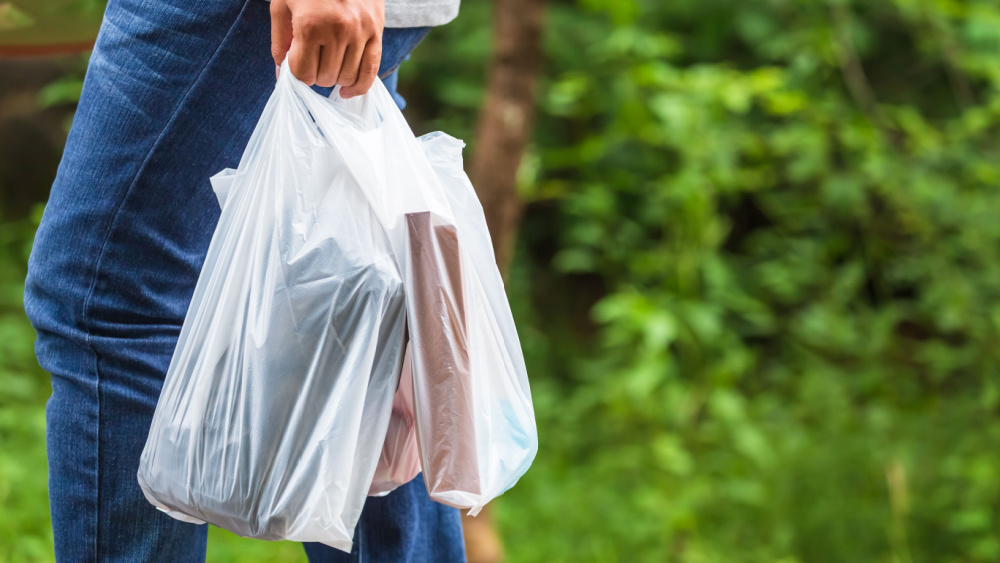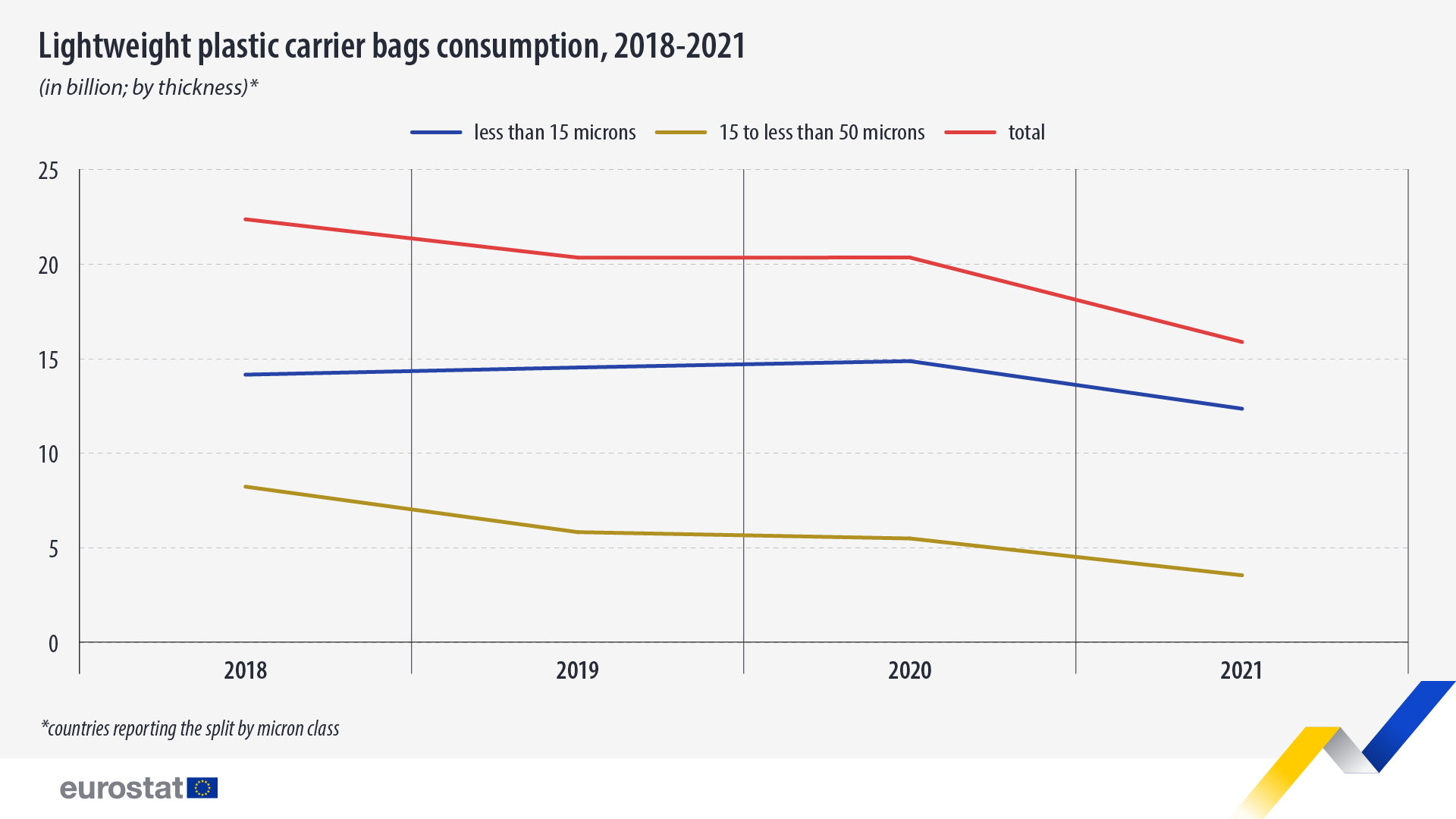Decrease in lightweight plastic bags continued in 2021

In 2021, each person living in the EU consumed on average 77 lightweight plastic carrier bags (LPCBs), which is 11 bags less per person, compared with 2020. Overall, 34.2 billion (bn) lightweight plastic carrier bags were consumed in the EU in 2021 (-4.8 bn bags compared with 2020).
This information comes from data on lightweight plastic carrier bags published by Eurostat today. The article presents a handful of findings from the more detailed Statistics Explained article.
Source dataset: env_waspcb
2021 was the first year in which EU consumption of very lightweight plastic carrier bags (i.e., bags with a wall thickness of less than 15 micrometres (microns)) decreased. In 2021, the EU inhabitants consumed 12.3 bn very light plastic carrier bags (VLPCBs), less than in any of the years before (since the data collection started in 2018): 14.1 bn in 2018; 14.5 bn in 2019; 14.9 bn in 2020).
Since 2018, the consumption of LPCBs between 15 to less than 50 microns thick has steadily decreased: from 8.2 bn in 2018 to 3.5 bn in 2021.
All EU countries now have consumption reduction measures in place as required by the plastic bags directive, which aims to reduce the consumption of LPCBs to not exceed 40 bags per person by 31 December 2025. However, this target does not include VLPCBs.
Source dataset: env_waspcb
Among the EU countries with available data, the countries that reported the highest consumption of LPCBs per person in 2021 were Lithuania (271 bags per person), Latvia (204) and Czechia (189), with the majority of the consumption relating to VLPCBs.
At the other end of the scale, the countries that reported the lowest consumption were Belgium (5 bags per person), Portugal (9) and Sweden (16). In Belgium, the per capita consumption of VLPCBs was 1 bag, and 2 bags in Sweden. Portugal did not report the split.
The wide range seen in per capita consumption is primarily attributable to differences in the effectiveness of the measures, depending on economic, social, and policy factors. Another reason is that some countries introduced consumption reduction measures during the 2018–2021 period, but others had the measures in place longer than that. A third potential explanation is the different calculation methodologies used by EU countries.
For more information
- Statistics Explained article on consumption of plastic carrier bags - estimates
- Thematic section on waste
- Database on waste
Methodological notes
- Lightweight plastic carrier bags (LPCBs): plastic carrier bags with a wall thickness below 50 microns, with or without a handle, that are made of plastic, that are supplied to customers at the point of sale of goods or products.
- The aggregates for the first visual are calculated based on the countries that voluntarily reported the split by micron class. For Austria, Bulgaria, Denmark, Estonia, Greece, France, Croatia, Italy, Malta, the Netherlands, Poland, Portugal and Romania: data not available for all years.
- Bulgaria, Denmark, Estonia, Greece, Italy, Malta, Netherlands and Romania: data on lightweight plastic carrier bag consumption per person not available for 2021.
- The Directive 2015/720 (Plastic Bags Directive) aims to reduce consumption of LPCBs in order to combat littering, change consumer behaviour, and promote waste prevention, and lays down consumption reduction requirements.
If you have any queries, please visit our contact us page.


